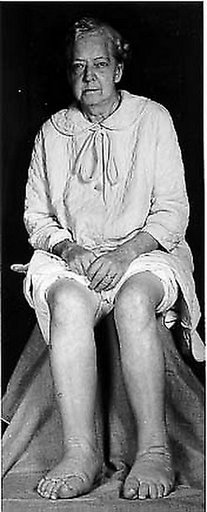Graves' disease history and symptoms: Difference between revisions
No edit summary |
No edit summary |
||
| Line 14: | Line 14: | ||
The two signs that are truly ''diagnostic'' of Graves' disease (i.e. not seen in other hyperthyroid conditions) are exophthalmos and nonpitting edema. Goiter, which is caused by an enlarged thyroid gland, can be present with other forms of hyperthyroidism, although Graves' disease is the most common cause. A large goiter is visible to the naked eye, but a smaller goiter may not be clinically detectable, though [[X-ray]]s or [[ultrasound]] can assist in detecting it. | The two signs that are truly ''diagnostic'' of Graves' disease (i.e. not seen in other hyperthyroid conditions) are exophthalmos and nonpitting edema. Goiter, which is caused by an enlarged thyroid gland, can be present with other forms of hyperthyroidism, although Graves' disease is the most common cause. A large goiter is visible to the naked eye, but a smaller goiter may not be clinically detectable, though [[X-ray]]s or [[ultrasound]] can assist in detecting it. | ||
===Other Graves' Disease Symptoms=== | ===Other Graves' Disease Symptoms=== | ||
Revision as of 20:27, 27 August 2012
|
Graves' disease Microchapters |
|
Diagnosis |
|---|
|
Treatment |
|
Medical Therapy |
|
Case Studies |
|
Graves' disease history and symptoms On the Web |
|
American Roentgen Ray Society Images of Graves' disease history and symptoms |
|
Risk calculators and risk factors for Graves' disease history and symptoms |
Editor-In-Chief: C. Michael Gibson, M.S., M.D. [1]
Overview
History and Symptoms

Graves' disease may present clinically with one of the following characteristic signs:
- goiter (an enlarged thyroid gland, sometimes detectable as a swelling in the neck)
- exophthalmos (protuberance of one or both eyes)
- a non-pitting edema with thickening of the skin, described as "peau d'orange" or "orange peel", usually found on the lower extremities
- fatigue, weight loss with increased appetite, and other symptoms of hyperthyroidism
The two signs that are truly diagnostic of Graves' disease (i.e. not seen in other hyperthyroid conditions) are exophthalmos and nonpitting edema. Goiter, which is caused by an enlarged thyroid gland, can be present with other forms of hyperthyroidism, although Graves' disease is the most common cause. A large goiter is visible to the naked eye, but a smaller goiter may not be clinically detectable, though X-rays or ultrasound can assist in detecting it.
Other Graves' Disease Symptoms
Some of the most typical symptoms of Graves' Disease are the following:
- Palpitations
- Tachycardia (rapid heart rate: 100-120 beats per minute, or higher)
- Arrhythmia (irregular heart beat)
- Raised blood pressure (Hypertension)
- Tremor (usually fine shaking eg. hands)
- Excessive sweating
- Heat intolerance
- Increased appetite
- Unexplained weight loss despite increased appetite
- Shortness of breath
- Muscle weakness (especially in the large muscles of the arms and legs) and degeneration
- Diminished/Changed sex drive
- Insomnia (inability to get enough sleep)
- Increased energy
- Fatigue
- Mental impairment, memory lapses, diminished attention span
- Decreased concentration
- Nervousness, agitation
- Irritability
- Restlessness
- Erratic behavior
- Emotional lability
- Brittle nails
- Abnormal breast enlargement (men)
- Goiter (enlarged thyroid gland)
- Protruding eyeballs (Graves' disease only)
- Double vision
- Eye pain, irritation, or the feeling of grit or sand in the eyes
- Swelling or redness of eyes or eyelids/eyelid retraction
- Sensitivity to light
- Decrease in menstrual periods (oligomenorrhea), Irregular and scant menstrual flow (Amenorrhea)
- Difficulty conceiving/infertility/recurrent miscarriage
- Hair loss
- Itchy skin, hives
- Chronic sinus infections
- Lumpy, reddish skin of the lower legs (pretibial myxedema)
- Smooth, velvety skin
- Increased bowel movements or Diarrhea